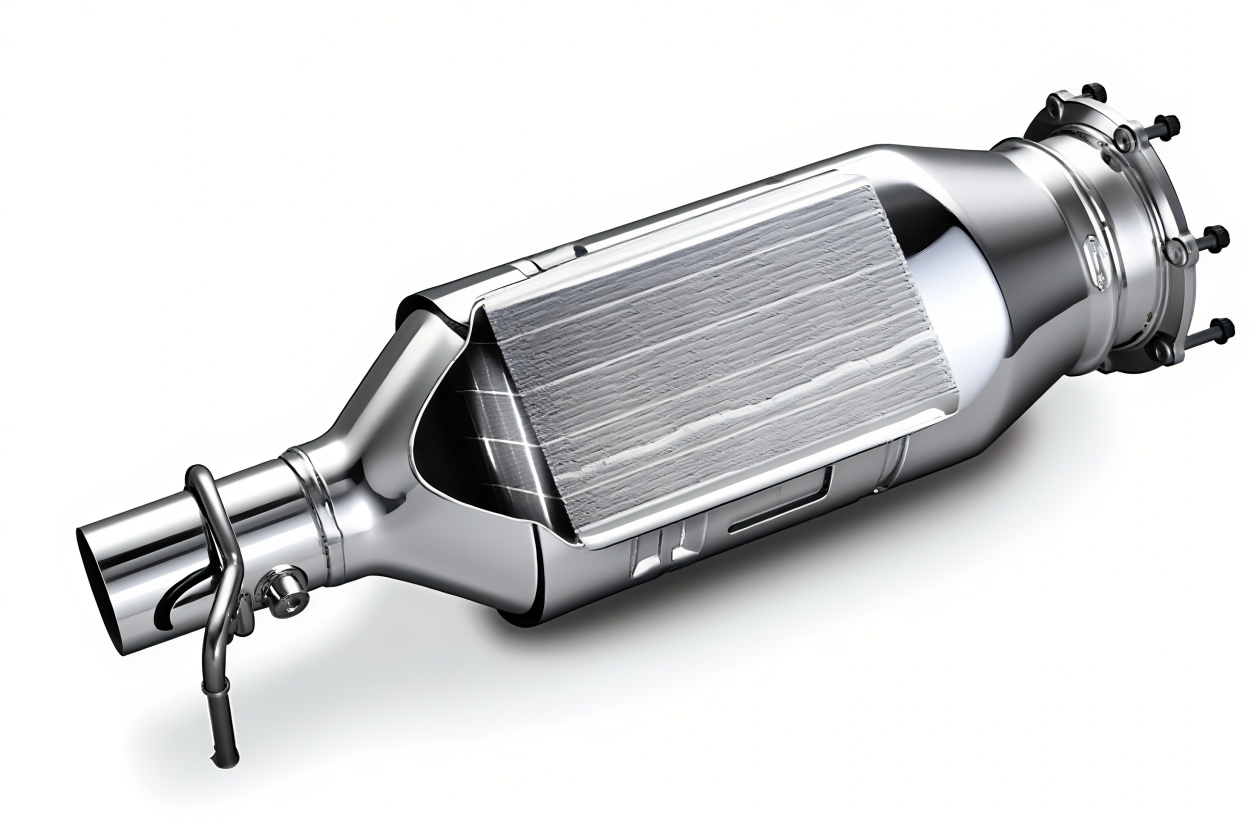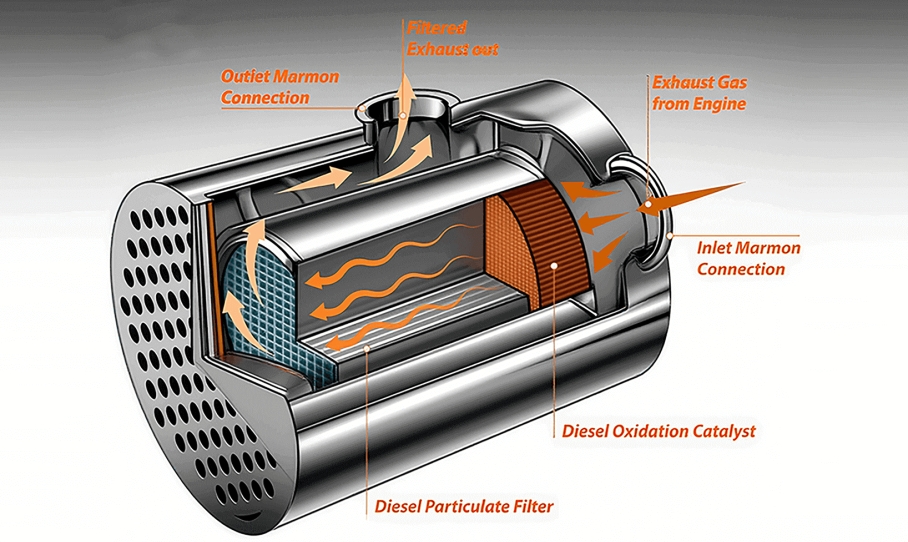A diesel particulate filter, also called a DPF, can clean up your diesel engine’s exhaust by trapping 70% to 90% of the black smoke and soot. Therefore, you’ll notice less dark smoke blowing out of the tailpipe, as the DPF periodically burns off the built-up soot by heating it up and converting it into CO₂. This is called “regeneration.” If that burn-off failed, your truck or machine’s Cummins 6.7L diesel engine will set a P2459 code.
What Is the P2459 Code on 6.7 Cummins Engines
The P2459 trouble code indicates that your DPF system is attempting to regenerate too frequently. This common issue on 6.7 Cummins engines can lead to reduced fuel economy, decreased engine performance, and potential damage to emissions components if left unaddressed. The problem typically stems from a failing DPF sensor, clogged filter, or issues with the diesel exhaust fluid (DEF) system. Our diagnostic experience shows that addressing this code promptly can prevent more extensive repairs down the road.

Common Causes of P2459 DPF Regeneration Issues
Trouble code P2459 stands for “Particulate Filter Regeneration Frequency Bank 1,” also known as “Diesel Particulate Filter Regeneration Frequency” by some engines. This code means your DPF system is attempting to regenerate too frequently. This is a generic trouble code that happens to vehicles with a diesel engine. This issue on 6.7 Cummins engines can lead to reduced fuel economy, decreased engine performance, and potential damage to emissions components if left unaddressed.
Most 6.7 Cummins owners experience this code between 80,000-120,000 miles, especially in trucks used for towing or short-distance driving. The regeneration process is designed to burn off accumulated soot, but when it happens too frequently, it signals that something in the emissions system requires attention. Getting relevant replacement parts from FridayParts can resolve these issues.
How to Fix the P2459 Code
If your truck throws a P2459 code, don’t panic — but don’t ignore it either. This isn’t something that fixes itself. Here’s what we recommend you or your mechanic check first:
- Check the DPF for soot
- Check if the last regeneration cycle finished or got cut off
- Read the temperature and pressure sensor data
- Scan for other related codes like P2463 (that means the DPF is too full)
- Clean or replace the DPF if needed
- Check for any ECU software updates that might help the system run better
Sometimes, you can fix it without spending much—just clean the sensors or update the software. Quick, simple, and cheap.
But if the problem keeps coming back, it might mean the DPF or sensors are worn out. In that case, parts replacement is on the table—and a full DPF swap isn’t cheap. But catching this early saves you from bigger repairs down the road, like a clogged exhaust or engine derate mode that keeps you from working.
If your truck is like most out there, you just want it to run right and last long. Taking care of codes like this keeps your truck strong and out of the shop. You don’t have to be a diesel tech to handle it—just stay ahead of it.
Essential Parts for Fixing P2459 Codes
When troubleshooting P2459 codes on your 6.7 Cummins, several key components may need inspection or replacement. For trucks with higher mileage, we recommend considering a complete DPF system overhaul, which includes replacing multiple sensors and the filter itself. This comprehensive approach often resolves not just the P2459 code but prevents related codes like P203F and P242F from appearing later.

DPF Component Comparison for 6.7 Cummins
| Component | Function | Symptoms When Failing | Typical Lifespan |
|---|---|---|---|
| DPF Filter | Captures soot particles from exhaust | Frequent regeneration, power loss, poor fuel economy | 80,000-120,000 miles |
| DPF Pressure Sensor | Measures the pressure differential across the filter | False regeneration triggers, P2459 code | 60,000-100,000 miles |
| EGR Valve | Recirculates exhaust gas to reduce NOx | Excessive soot production, black smoke | 70,000-120,000 miles |
| Temperature Sensors | Monitor exhaust temperatures | Irregular regeneration cycles, engine derating | 60,000-90,000 miles |
| DEF Injector | Sprays DEF into the exhaust stream | SCR system issues, increased emissions | 80,000-120,000 miles |
Installation Tips for DPF System Components
Replacing DPF system components requires attention to detail to ensure proper function. When installing a new DPF filter, carefully inspect all mounting hardware and gaskets – even minor exhaust leaks can cause sensor misreadings and trigger codes. Pressure sensors should be connected securely with no pinched wires, and their ports must remain free of debris. After installation, using our parts typically requires an ECM reset to clear the fault memory and allow the system to properly calibrate with the new components.
For best results, we recommend replacing sensors and the DPF filter simultaneously rather than one at a time. This approach eliminates the guesswork and prevents cascade failures where one compromised component damages another. Remember that proper driving habits after repair – including regular highway driving to encourage passive regeneration – will extend the life of your new emissions components. All our installation instructions are included with each part for straightforward replacement.
Tips to Prevent Future P2459 Codes
Implementing a preventative maintenance routine can help avoid future issues. Regular oil changes with the correct low-ash diesel formula are essential, as improper oil can accelerate soot accumulation in the DPF. Fuel quality matters too – we recommend periodically using a fuel system cleaner designed for modern diesel engines to reduce deposit formation. Additionally, ensuring your engine air filter remains clean prevents excess soot production that can overwork your DPF system.
Final Thoughts
Driving habits significantly impact DPF health. Incorporating regular highway driving sessions allows for passive regeneration, reducing the frequency of active regeneration cycles that consume extra fuel. For commercial applications, monitoring and logging regeneration events can help identify problems before they trigger warning lights. With proper maintenance and quality replacement parts from FridayParts, your Cummins 6.7 emissions system can deliver reliable performance throughout your ownership experience.
